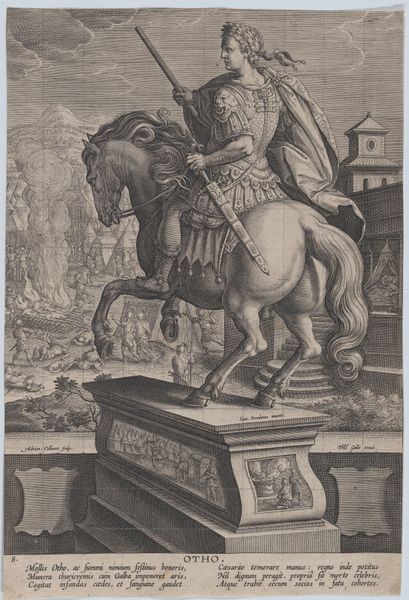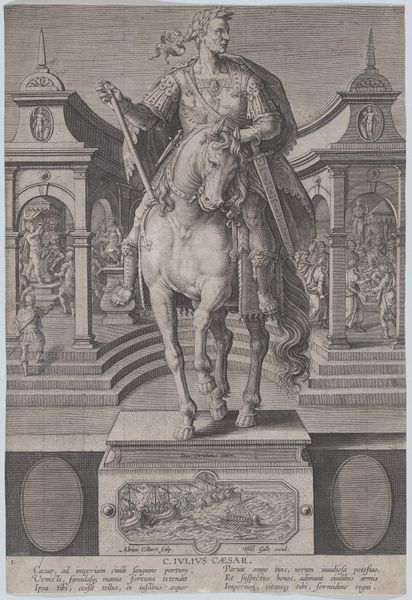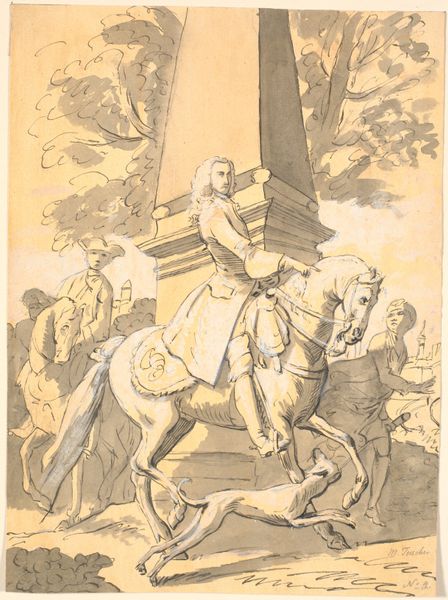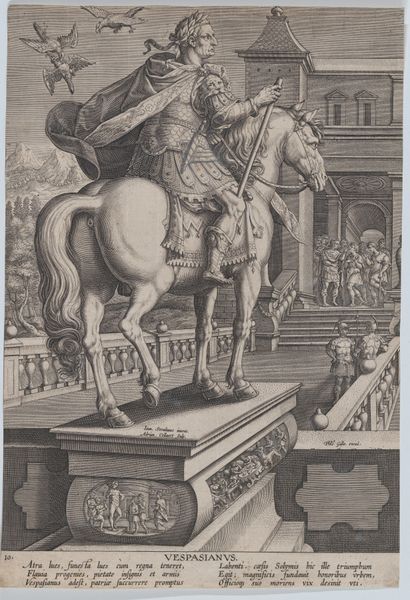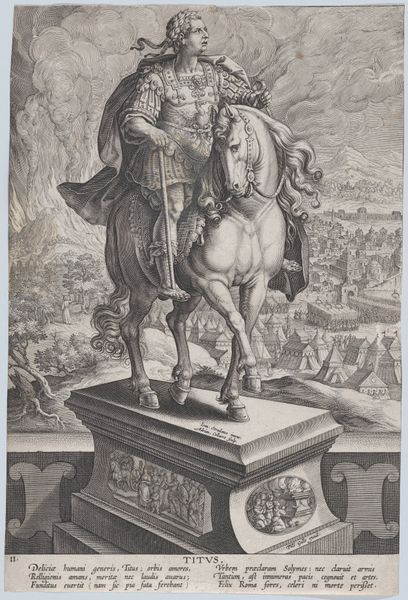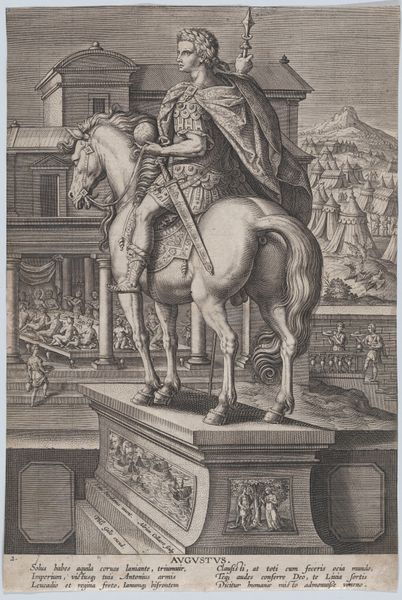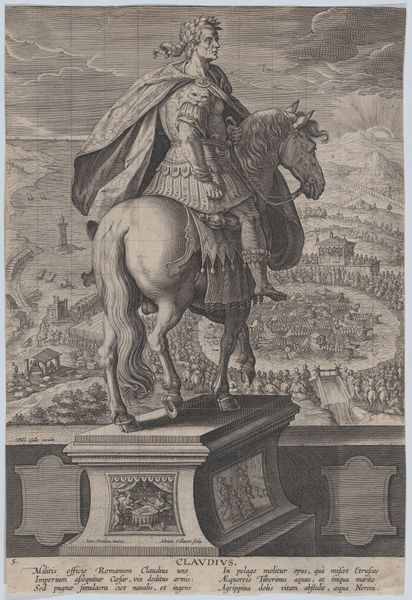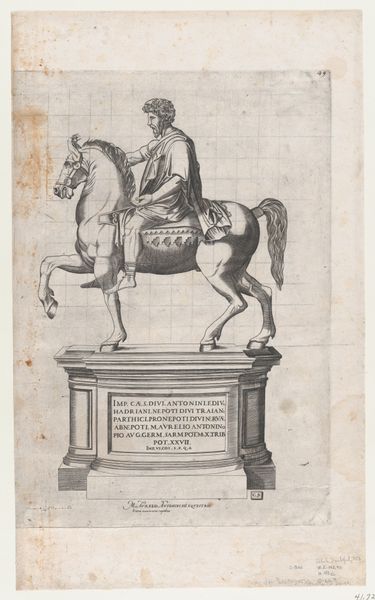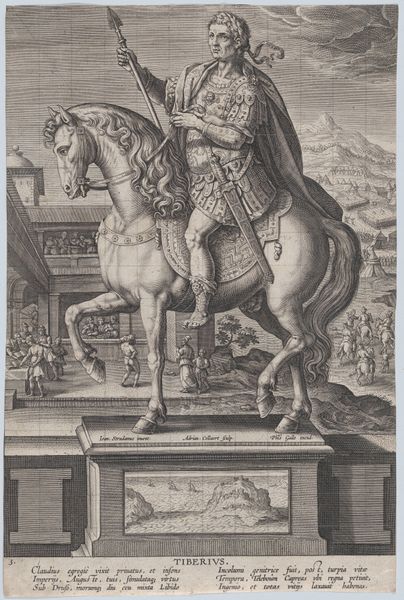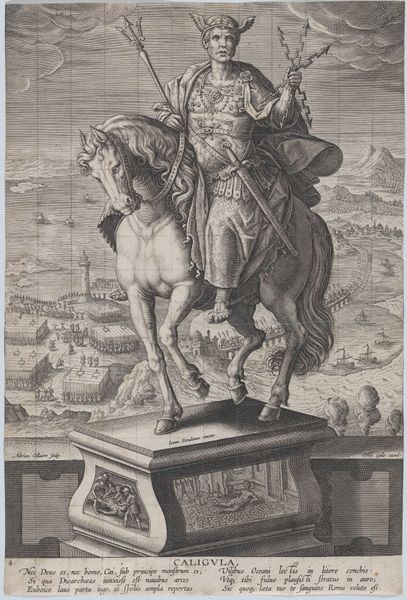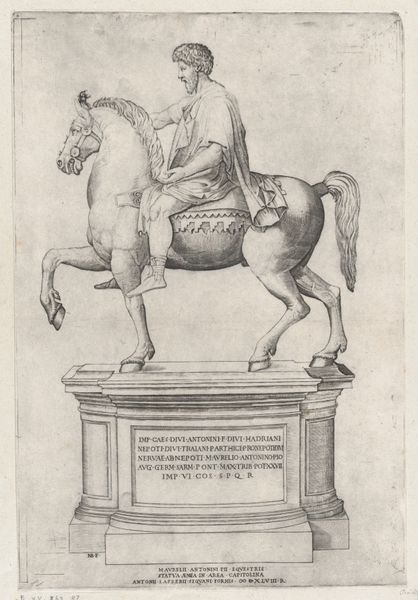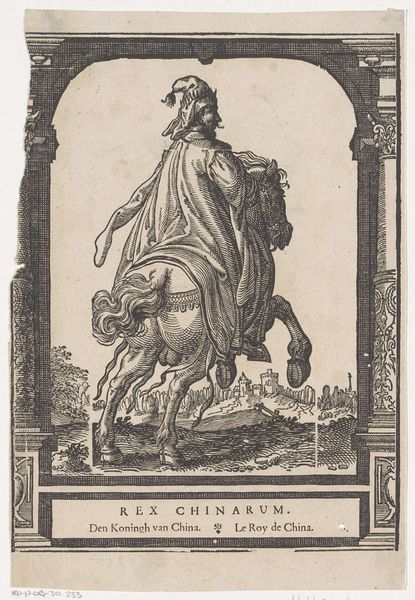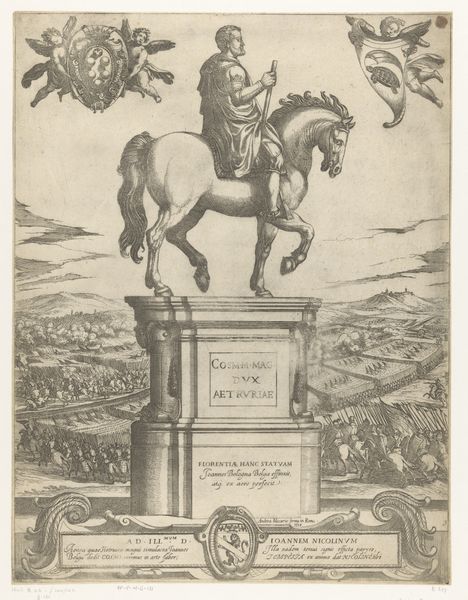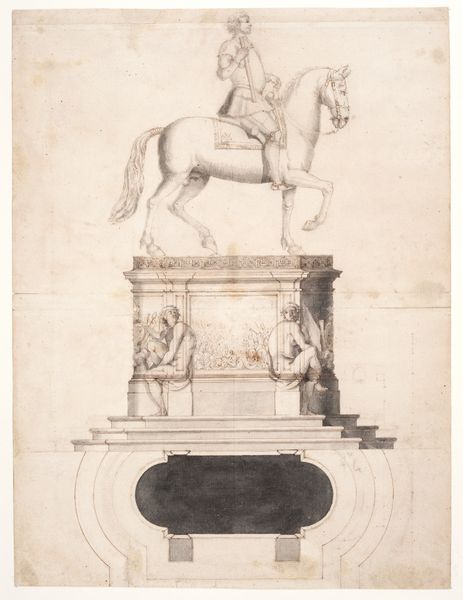
Plate 9: equestrian statue of Vitellius, seen three-quarters to the left, with his death scene in the background at right, his body being thrown into the Tiber at upper right, from 'Roman Emperors on Horseback' 1582 - 1594
0:00
0:00
drawing, print, metal, etching, sculpture, engraving
#
portrait
#
drawing
#
medieval
# print
#
metal
#
etching
#
figuration
#
romanesque
#
sculpture
#
horse
#
men
#
history-painting
#
engraving
Dimensions: Sheet (Trimmed): 12 11/16 × 8 9/16 in. (32.3 × 21.8 cm)
Copyright: Public Domain
Adriaen Collaert made this print of Vitellius in the late 16th or early 17th century, working with an engraver’s tools on a copper plate. The material qualities of metal enable the creation of fine, precise lines, and allow for the printing of many impressions. Look closely, and you can see how the network of hatching creates areas of light and shadow, defining the form of the emperor and his horse. The printmaking process involved skilled labor, both in the design and execution of the plate. This was not just a means of artistic expression, but also of circulating knowledge and ideas. Consider the social context: prints like this one were part of a booming industry, feeding a growing demand for images among the literate and affluent. They democratized access to art, but also served as propaganda, shaping perceptions of power and history.
Comments
No comments
Be the first to comment and join the conversation on the ultimate creative platform.
